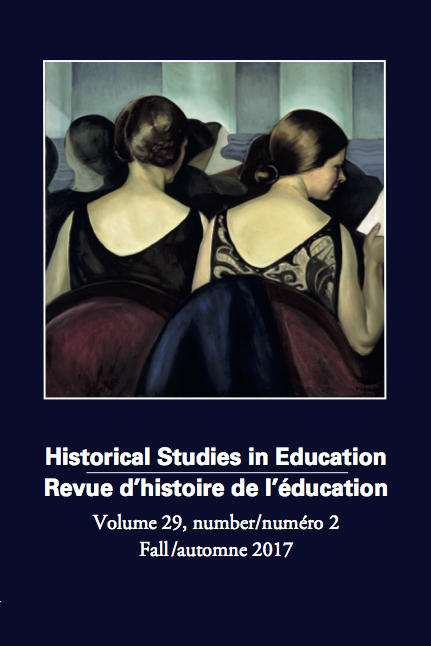Gaining Nationhood: A Comparative Analysis of Images Found in Ontario and Quebec History Textbooks, 1920 to 1948
Résumé
The centenary of the beginning of the First World War has seen renewed global attention to the war. A proliferation of scholarly works, commemorative public events, documentaries, and museum exhibits dedicated to the war ensured that the participating nations reaffirmed messages of service and sacrifice. The global response provides some insight into how nations crafted the memory of the war and the links made between remembrance and national identity. The Canadian War Museum, along with various state commemorations, encased the events of the war within narratives of heroism and sacrifice, most recently with the celebratory focus on the Battle of Vimy Ridge. This renewed interest in the war inspired this study, which explores how the war was portrayed in Ontario and Quebec history textbooks in the immediate post-war decades. This project argues that an analysis of both the textual narratives and the visual culture portrayed in history textbooks helps us better understand messages of nationhood in Canada. Through an examination of history textbooks that were approved in Ontario and Quebec between 1920 and 1948, we seek to uncover what the Ontario Department of Education, the Catholic church, and publishers felt were important for students in schools to remember about Canada’s participation in the war.
Résumé
Le centenaire du début de la Première Guerre mondiale a contribué à renouveler l’intérêt du public pour la Grande Guerre. On observe alors une prolifération des ouvrages académiques, des événements commémoratifs publics, des documentaires et des expositions muséales qui y sont dédiés et dont le but est de réaffirmer le message de service et de sacrifice des États qui y ont pris part. Ces ouvrages et événements donnent un aperçu de comment les nations construisent leur mémoire de la guerre ainsi que des liens tissés entre le devoir de mémoire et l’identité nationale. Le Musée canadien de la guerre, ainsi que plusieurs commémorations gouvernementales, synthétisent les événements de la Grande Guerre dans un récit d’héroïsme et de sacrifice. Un exemple récent de cela est l’intérêt porté à la bataille de la crête de Vimy. Cet intérêt renouvelé envers la Grande Guerre a inspiré cette étude qui explore comment celle-ci a été représentée dans les manuels scolaires de l’Ontario et du Québec dans les décennies suivants la fin de la Première Guerre mondiale. Ce projet propose qu’une analyse des manuels centrés sur les récits textuels et de la culture visuelle aide à mieux comprendre les messages associés à la construction de la nation canadienne. À partir d’un examen des manuels scolaires approuvés pour l’Ontario et ceux disponibles pour le Québec entre les années 1920 et 1948, nous cherchons à découvrir ce que le Département de l’Éducation de l’Ontario, l’Église Catholique et les maisons d’éditions considéraient comme étant importants à ce souvenir à propos de la participation du Canada à la Première Guerre mondiale.
